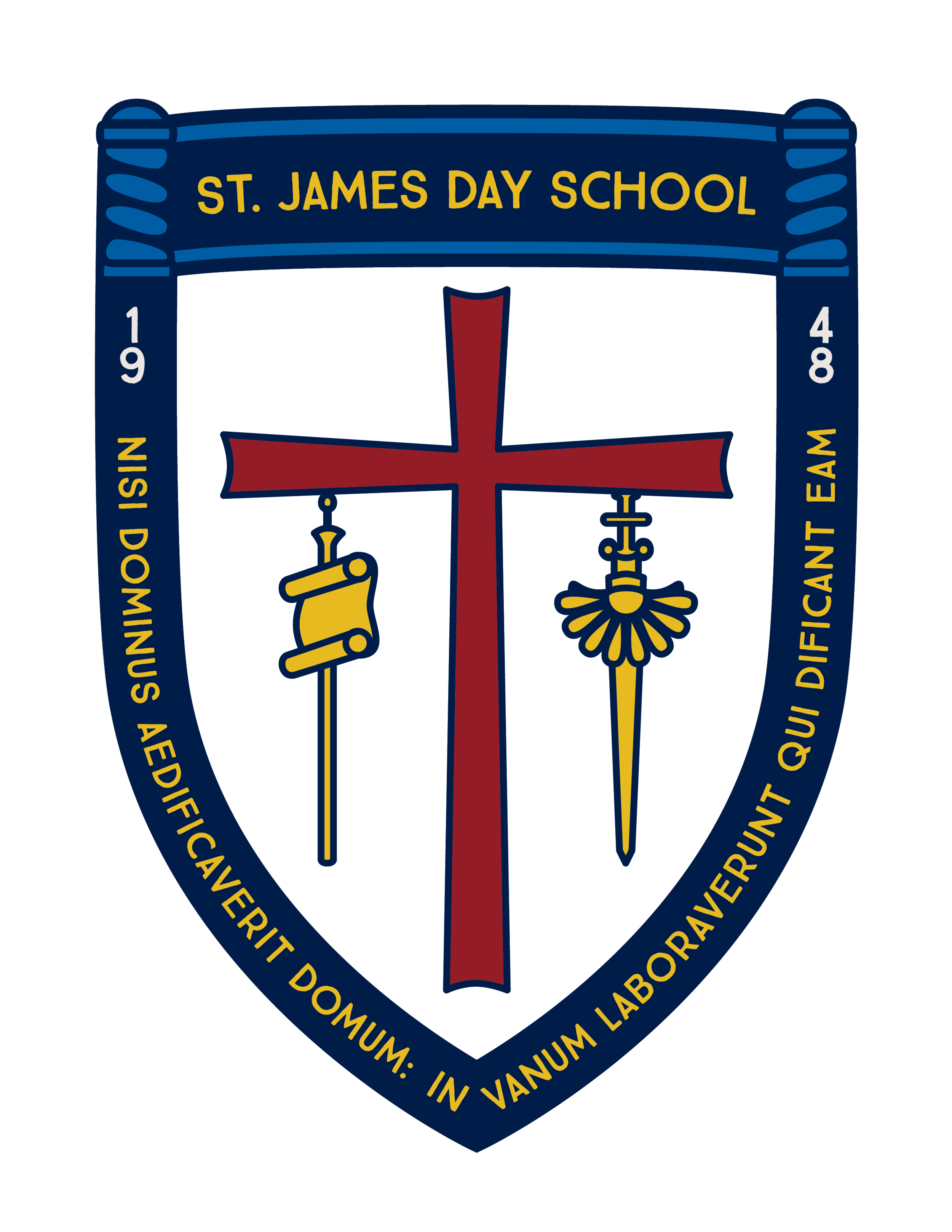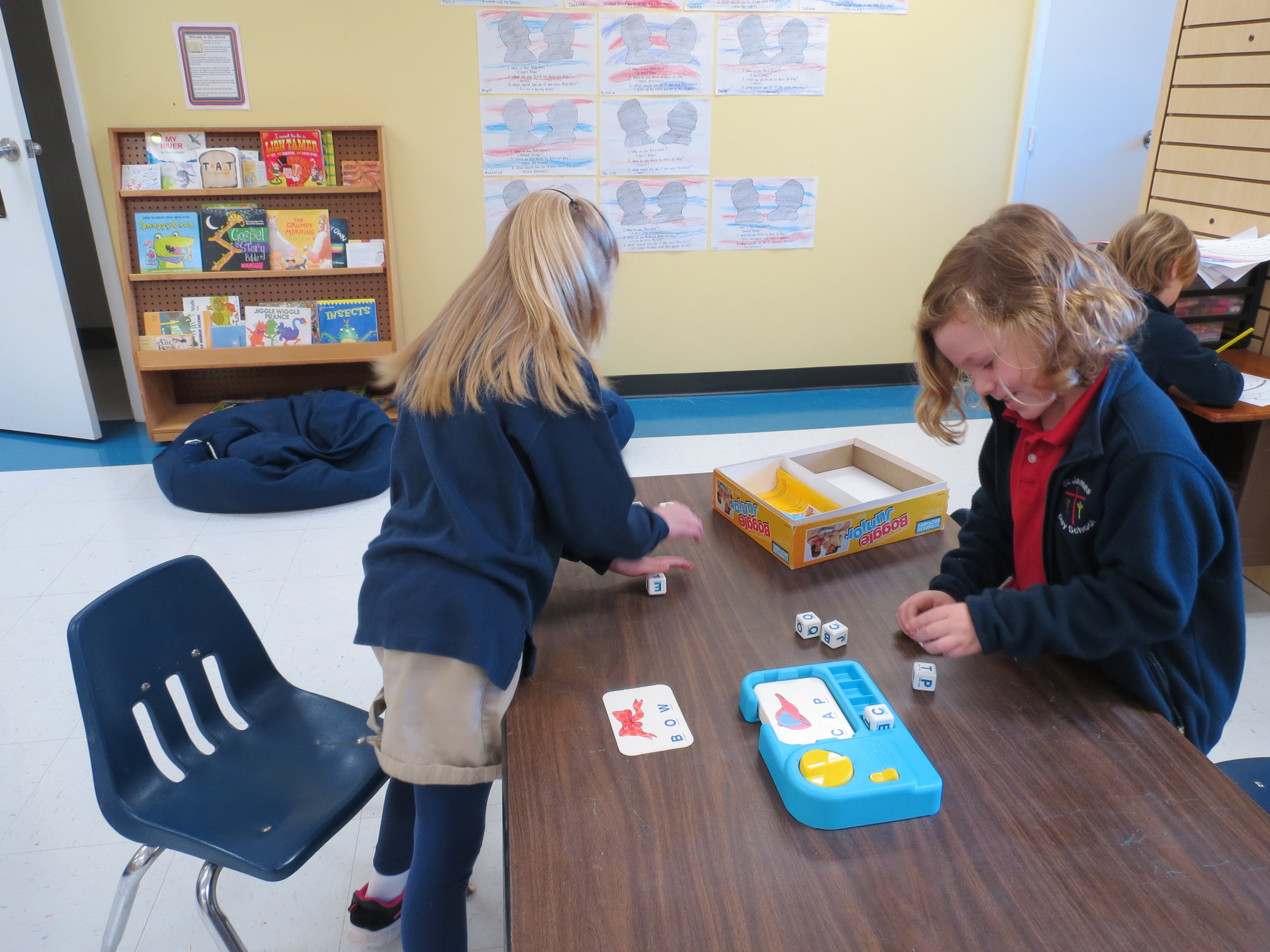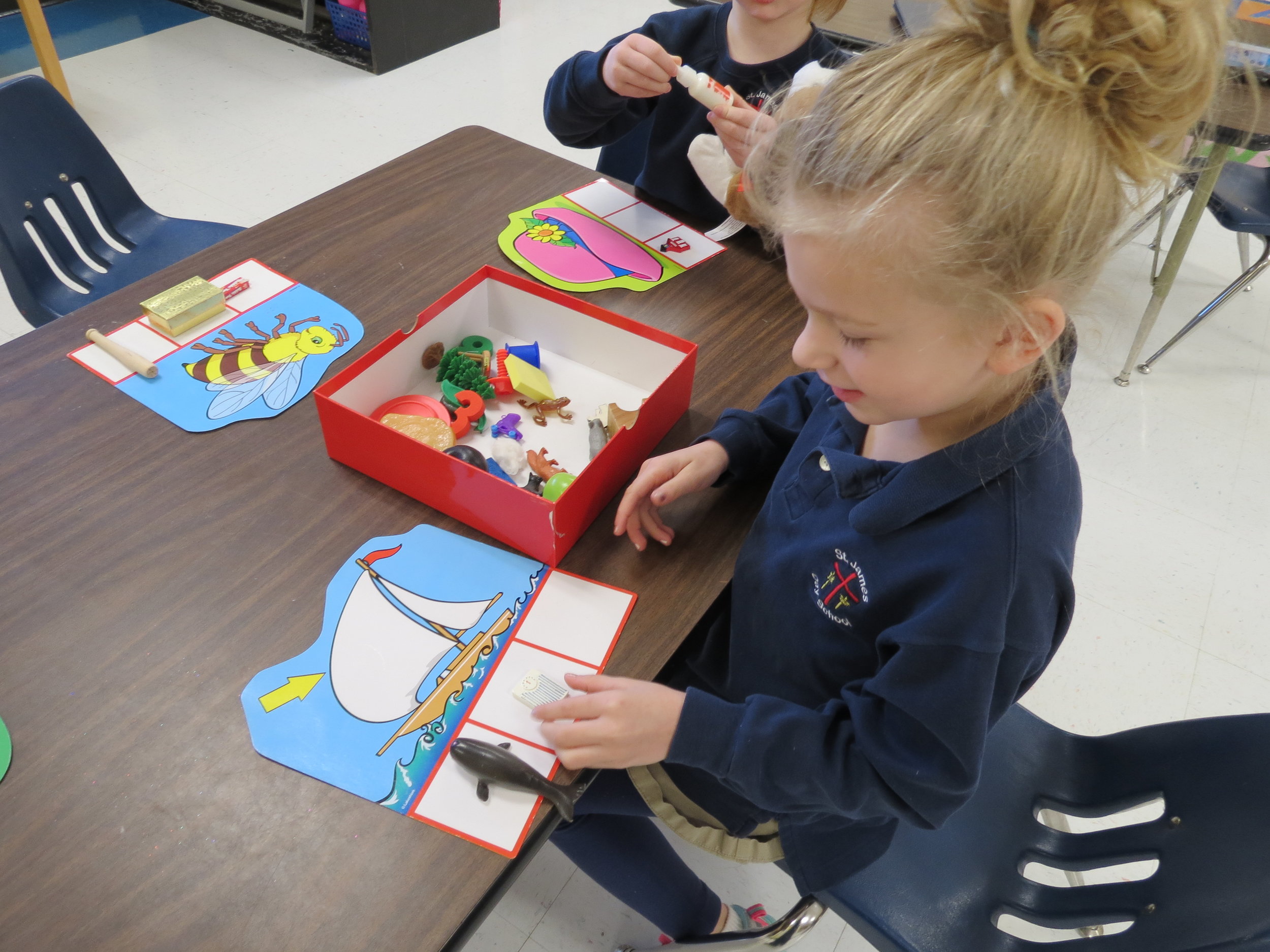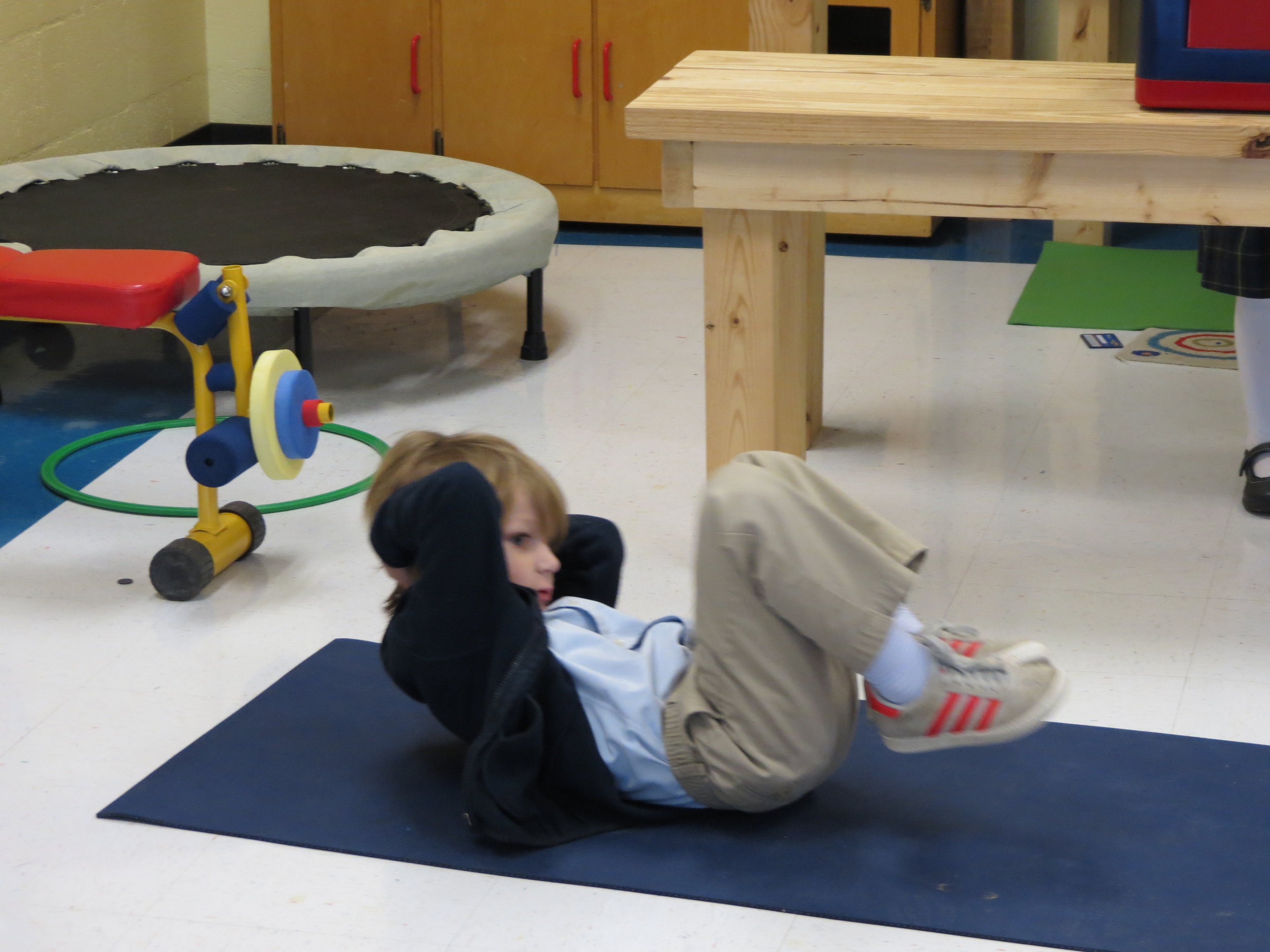Our focus question for the week was how can we make music with our voices? Here are our answers:
Collin – “you can hum”
Coleman – “you can move your neck up and down”
Anna Scott – “you can use a microphone”
Emily – “you can sing”
Tobi Lee – “you can whistle”
Madeleine – “you can use your vocal chords”
Over the last couple of weeks the children have been able to use several different musical instruments during music class. We also had some special visitors come to class and play the guitar, and Townes broke out his mandolin to play along. A special thank you to Ben, Lee and Mark for taking time out of their day and sharing their talents with our class.
We played Boggle Junior this week. Why are we playing board games in preschool? While playing Boggle the children were working on social/emotional skills by taking turns and sharing; fine motor skills by grasping and manipulating small objects and twisting; and cognitive skills by letter recognition, letter matching, spelling, word recognition, concentration and memory.
We worked on sequencing by talking about the life cycle of the violet in science. The children had to color the four parts of the life cycle, cut them out, and glue them in order onto their paper. Sequencing means understanding how a series of objects, events, and time occur in a specific and logical order. Sequencing activities help children know what comes next and to make predictions about things they cannot yet observe.
The children were able to work on their hopping skills by playing hopscotch in PE. Hopping is difficult for young children to master; it requires strength and balance to hold one leg in the air while hopping on the other.









































































































































